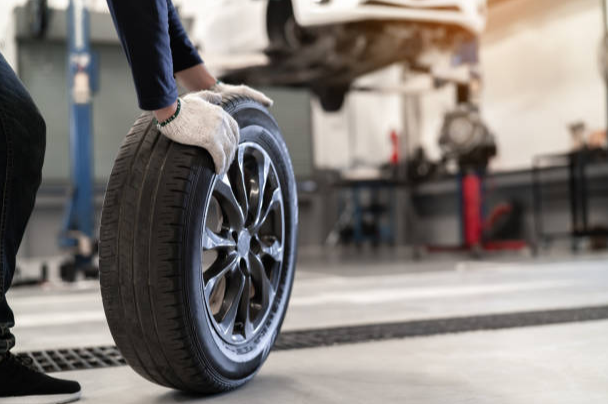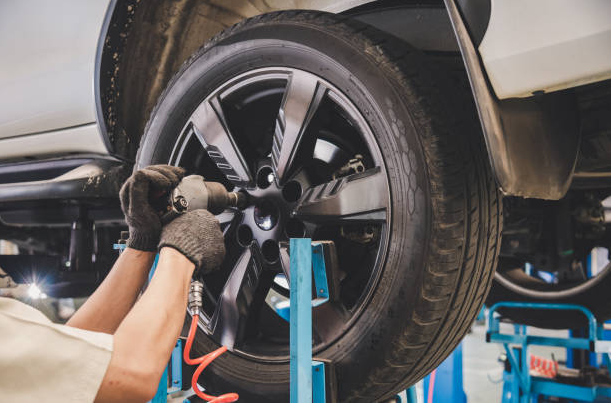Ultimate Guide to Car Tyres: Choose, Maintain and Maximise Performance
Ultimate Guide to Car Tyres: Choose, Maintain and Maximise Performance
When it comes to your vehicle's performance and safety, few components are as critical as the tyres. Car tyres play a pivotal role in ensuring a smooth and secure ride, making it crucial for drivers to understand the essentials of tyre selection, maintenance, and replacement. In this practical guide, we'll break down the key aspects of car tyres to help you make informed decisions for your vehicle.

Tyre Types
Car tyres come in various types, each designed to meet specific driving needs. The most common types include summer tyres, winter tyres, all-season tyres, and performance tyres. Understanding the characteristics and advantages of each type can guide you in choosing the right set for your driving conditions and preferences. Visit https://www.ozzytyres.com.au/tyres to know more.
Tread Patterns
The tread pattern of a tyre affects its performance in different weather conditions. Tread patterns vary from symmetrical to asymmetrical and directional. Symmetrical treads offer versatility, asymmetrical treads focus on performance, and directional treads excel in channelling water away for improved wet traction. Consider your typical driving environment and weather conditions when selecting a tread pattern.
Tyre Size and Ratings
One of the most critical aspects of tyre selection is choosing the right size and understanding the tyre ratings. The size is typically indicated on the sidewall of the tyre and includes information about width, aspect ratio, and diameter. Tyre ratings, such as load index and speed rating, provide information about the maximum load capacity and speed capability of the tyre. It's essential to adhere to the manufacturer's recommendations for your specific vehicle.
Inflation and Pressure:
Proper tyre inflation is crucial for both safety and performance. Regularly check and maintain the recommended tyre pressure, as underinflated or overinflated tyres can compromise handling, fuel efficiency, and tyre lifespan. Many gas stations offer air pumps with pressure gauges for convenient inflation. Make it a habit to check your tyre pressure at least once a month.
Rotation and Alignment
To ensure even wear and prolong the life of your tyres, regular rotation is necessary. Tyre rotation patterns vary depending on factors like whether your vehicle is front-wheel, rear-wheel, or all-wheel drive. Additionally, wheel alignment is essential to prevent uneven tyre wear and maintain proper vehicle handling. Consider having your tyres rotated and aligned as part of your routine maintenance schedule.

Balancing
When installing new tyres or after tyre rotation, balancing is crucial. Imbalanced tyres can lead to uneven wear, vibrations, and an uncomfortable driving experience. Balancing involves adding small weights to the wheel to ensure even weight distribution. This relatively simple procedure contributes significantly to a smoother ride and extends the lifespan of your tyres.
Choosing the Right Tyre for Your Driving Style
Consider your driving style and preferences when selecting car tyres. If you prioritize a comfortable and quiet ride, touring or grand touring tyres may be suitable. For enhanced performance, consider high-performance or ultra-high-performance tyres. Drivers in areas with frequent winter weather should opt for winter tyres with specialized tread patterns for improved traction on snow and ice.
Environmental Impact
As environmental awareness grows, some drivers may prioritize eco-friendly tyre options. Low rolling resistance tyres, for example, contribute to fuel efficiency and reduce carbon emissions. Additionally, many tyre manufacturers now offer environmentally conscious options, allowing drivers to make choices aligned with their sustainability values.
When to Replace Tyres
Knowing when to replace your car tyres is crucial for safety. Tread depth is a key indicator, and many countries have legal requirements for minimum tread depth. Additionally, pay attention to signs of uneven wear, bulges, or visible damage. If you notice any of these issues, it's advisable to consult with a professional and consider replacing your tyres promptly.
Conclusion
In conclusion, car tyres are integral to your vehicle's performance, safety, and overall driving experience. Understanding the different types of tyres, tread patterns, sizes, and ratings empowers you to make informed decisions that align with your driving needs. Regular maintenance, including proper inflation, rotation, balancing, and alignment, ensures the longevity of your tyres and contributes to a smoother ride. By considering your driving style, and environmental impact, and knowing when to replace your tyres, you can optimize the performance and safety of your vehicle on the road.
